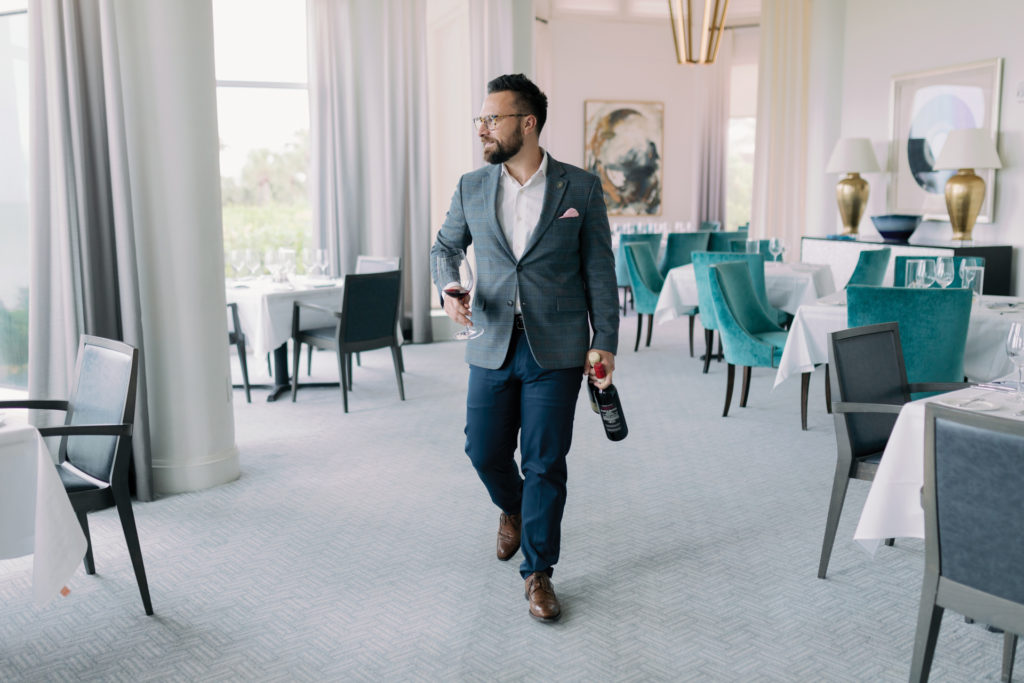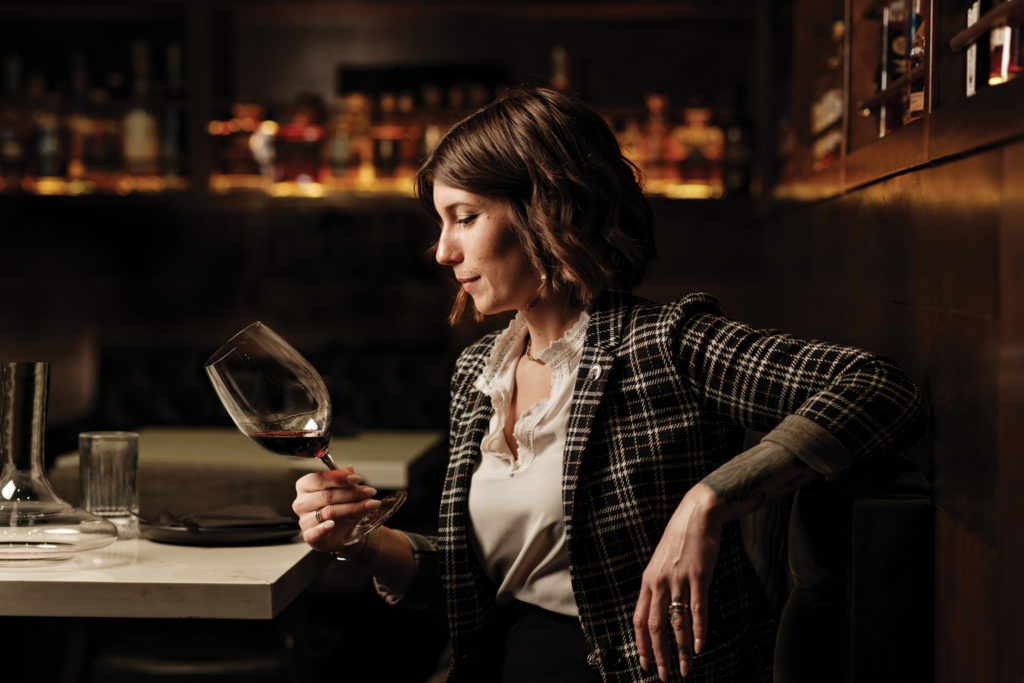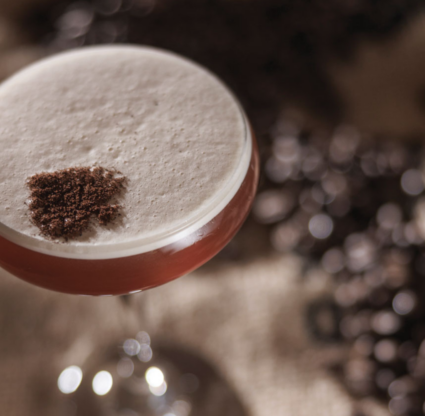When Jessica Sabau, the beverage director of Warren Naples, first started at Bleu Provence five years ago, her bartending skills were limited and her knowledge of wine even more so. But working alongside the Wine Spectator Grand Award-winning team—and moving up to assistant beverage director during her four years there—the now 27-year-old learned the importance of understanding the classics and cult wines (your Barolos, Bordeaux), and discovering lesser-known gems.
As the price of Burgundy skyrockets, Jessica is looking to under-the-radar villages within the famous region, sourcing deep-violet pinot noirs from Fixin, which neighbors Burgundy’s Gevrey-Chambertin; the wines are similar in style but better in value. The certified sommelier, who is currently pursuing her advanced level, credits her experience, education, trends and some trial and error for how she builds the wine program at Warren—the second outpost for the Delray Beach drinking den, coming to The Collective in Naples.
For Warren’s Naples locale, she’s mixing classics with new, trending wines that require education for the staff and guests to move bottles from the cellar to the tables. “The kind of wines that don’t sell themselves require a sommelier’s
attention and guest interaction, which is what people want,” she says. The story behind a wine or whiskey is as significant for those drinking it as knowing the varietals or time in oak. That’s why she hosts winemaker events and promotes women-owned and -operated wineries and distilleries. “It’s important for winemakers and consumers to make these connections, and not be hidden behind a bottle or for their story to get lost in the background,” she adds.
The Aielli Group’s director of wine and spirits, Liset Zelaya, also organizes meet-the-maker events at Barbatella, Grappino, Sea Salt and Dorona in Naples. Part of her role involves introducing consumers to new winemakers and lesser-known grape varietals: “Once people try [these other wines], they keep asking for them.”
The certified sommelier—who used to plan her vacations around vineyards—invites a mix of Old and New World producers and female-founded wineries, like Juelle Fisher from Fisher Winery. She hopes to bring in Maggie Harrison, from Antica Terra in Oregon’s Willamette Valley. “She’s so passionate about the soil, and that reflects in the wine,” Liset says, adding that each of Maggie’s wines—even when they’re the same varietal—are different from the next, with a true sense of place.
Marcello Palazzi, the 44-year-old certified sommelier and Italian wine specialist who joined Naples’ Campagna Hospitality Group as beverage director in 2021, came from the distributor side of the industry. He had an idea of what consumers in the region were interested in drinking and wanted to bring in wines that weren’t as common in the market.
While curating the restaurants’ wine lists—the group includes Osteria Tulia, Bar Tulia, The French and Bar Tulia Mercato—he selects a mix of ‘safe,’ or domestic varietals (chardonnay from Napa Valley, pinot noir from Burgundy), but also adds varietals for those who want something more adventurous. For instance, Osteria Tulia is the only restaurant in Naples to carry late-harvested, citrus-scented Marisa Cuomo Furore Bianco Fiorduva, a blend of rare, indigenous ripoli, fenile and ginestra grapes from the Amalfi Coast.
Every year, he tastes new vintages and different producers to help source the best quality wines for the house label. Each of the restaurants has its own identity and soul, so you’ll find more obscure Italian varietals at Osteria Tulia, like a 100 percent Timorasso from the Colli Tortonesi DOC, in southeastern Piedmont, while The French focuses on classic regions and some of the most famous producers in them: Château Pétrus, Vega Sicilia, Opus One, Sassicaia.
In Bonita Springs, with more than 70 percent of the list at Angelina’s Ristorante spotlighting Italian wines, assistant general manager and certified sommelier, Nick Kattman, aims to give oenophiles unique experiences. The restaurant team is proud to carry collector wines, like prestigious Amarones from the 1960s and Barolos from the 1980s, but Nick also sources varietals from lesser-known, family estates, like the three bottles of Mastroberardino he stocks from the Campania region, known for its full-bodied aglianico.
Advanced sommelier Clément Cariot, who manages his family’s Bleu Provence, had an expansive knowledge of French wine thanks to his parents and upbringing. He started to discover new gems from around the world when he got involved with The Court of Master Sommeliers. “Out of my favorite California AVA, Santa Cruz Mountains, Ceritas makes one of the most stunning chardonnays I have enjoyed in the U.S.,—the wine rivals its white Burgundian counterparts without breaking a sweat,” the 42-year-old says.
His father, Jacques, was his wine mentor—they tasted a Château Lafite Rothschild from the 1980s when Clément was just a child—and helped structure his understanding of the cultural relevance of wine and its place next to the food on the dinner table. (The winningest Wine Spectator Award winner in our region, Bleu Provence has nearly doubled the number of wines on the list since first receiving the award in 2015.) In addition to collector-worthy producers, he looks to lesser-known wineries from classically loved regions, like Domaine de la Chanteleuserie, in France’s Loire Valley: “They’ve been quietly making classic wines since 1822—it’s the best and longest-lived expression of cabernet franc I have encountered.”
Beau Harris, a certified sommelier and the general manager of two-year-old Ziggy D’Amico’s Whiskey Bar & Diner, says that while pinot grigio and chardonnay will always be mainstays on their wine list, he’s enjoyed finding eclectic varietals for the 12 rotating by-the-glass wines. He allocates more space for whiskey than wine (they always carry just over 50 whiskies in a variety of proofs and different barrel finishes), but for 37-year-old Beau, the wine list is just as important. By featuring a range of wine from grapes around the world, they can showcase how the profile changes from place to place. “Grapes like pinot noir are so expressive of place, so even though it’s the same varietal in Sonoma, Willamette Valley and New Zealand, they all taste completely different,” he says.
As local consumers become more open to trying something new and moving away from classic (and heavy) chardonnay and cabernet, there’s a push toward eclectic wines. Since the weather is warm year-round, diners are requesting lighter and medium wines, such as pinot noir and merlot, the latter of which is making a comeback after a decades-long slump.

Higor Valle, who was recently beverage director of Bay Colony Beach Club and now runs a wine consulting and cellar management company, says the local wine market is ripe with potential, thanks to its combination of seasonal and full-time residents. “Big Napa wines are still the chief category, but as the city grows and new restaurants pop up, we’re seeing more open-minded consumers—people are more receptive of what you’re putting in front of them,” Higor says.
The 35-year-old, Brazil-born advanced sommelier was part of the opening crew of The Continental and eventually became their wine steward and educator. The restaurant didn’t initially have plans to hire a full-time sommelier—there weren’t many dedicated sommeliers in the city at the time, and the restaurant’s opening list already featured an impressive 250 labels with plenty of fantastic wines from Burgundy, Bordeaux and California. But once Higor took over the program a year later, they doubled the selection and earned Wine Spectator’s Rising Star award. They have received consecutive Best of Awards of Excellence from Wine Spectator.
Higor helped pepper in wines from lesser-recognized regions around the world and pushed boundaries. The Continental was one of the first restaurants in the area to offer a vast selection of low-intervention, sulfite-free, and skin-contact wines. “My philosophy is to always strive to make the world of wine more inclusive, less intimidating, and fun,” Higor says. “It’s an incredible time to be drinking wine because the pretentious side is diminishing; wine is becoming more approachable. And [as sommeliers], we’re conduits—we’re there to be the middleman and help someone find what they’re looking for.”





